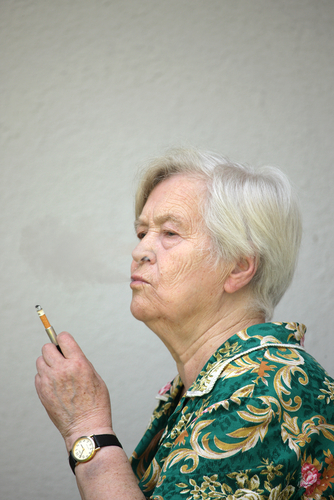 A study led by Lindsey A. Torre from the American Cancer Society Intramural Research in Atlanta concluded that lung cancer mortality rates are higher in women aged 50 years and older (50-74) than in women below the age of 50 (30-49).
A study led by Lindsey A. Torre from the American Cancer Society Intramural Research in Atlanta concluded that lung cancer mortality rates are higher in women aged 50 years and older (50-74) than in women below the age of 50 (30-49).
The results, published in Cancer Epidemiology, Biomarkers & Prevention, studied patient data between 2006 and 2010 that were taken from the World Health Organization’s Cancer Mortality Database, which included 65 populations on six continents.
By analyzing the numbers, researchers concluded that lung cancer mortality rates for young women were either stabilizing or decreasing in 47 of the 52 populations examined. Young women’s mortality rates ranged from 0.7 in Costa Rica to 14.8 in Hungary.
Conversely, older women, whose lung cancer mortality rates increased from 2006 to 2010 in 36 of the 64 populations studied, included countries in Southern, Eastern and Western Europe, and in South America with current mortality rates that ranged from 8.8 in Georgia to 120.0 in Scotland.
Regionalizing the data, researchers noted that for both young and older women, the rates were higher in parts of Europe and North America, and lower in Africa, Asia, and Latin America.
The study results may be explained, according to a previous study led by Carlo La Vecchia from the Institute of Epidemiology Mario Negri, Milan by the social context and smoking habits of people in the EU. In a study published last year in Annals of Oncology, La Vecchia suggested that lung cancer mortality rates would continue to increase among European women and lung cancer would overcome breast cancer around 2015. He also considered that the increasing numbers for lung cancer mortality could be due to “the additional rise in smoking prevalence observed in the 1970s;” and that “the favourable trends in younger women in the UK as well as in several other European countries suggest (…) possibly some decrease in lung cancer mortality rates in EU women, could occur after 2020.”
In this year’s publication, La Vecchia and his team reinforce these conclusions adding that smoking remains the main cause of lung cancer in the EU. “All the countries that have a lung cancer mortality rate higher than that of the EU as a whole also have a higher total cancer rate. This indicates that smoking habits remain the single strongest determinant of cancer mortality in the EU,” they write.
Lindsey Torre appears to agree with this opinion, as she notes that extra efforts in controlling tobacco consumption are needed in the EU to “attenuate the future lung cancer burden.”

